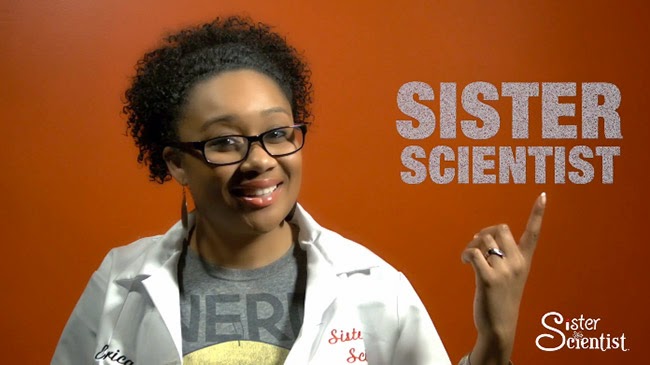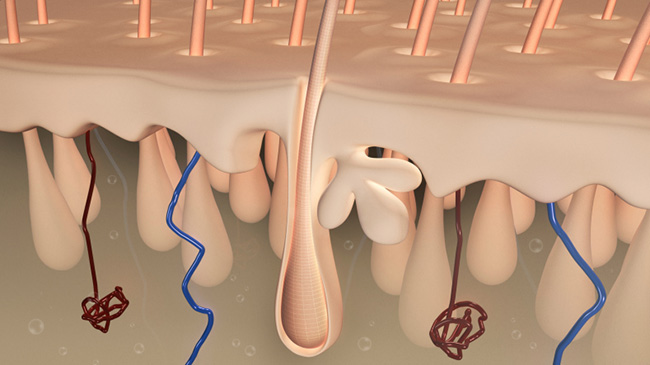Ladies, can we agree that we live in a world of hair envy? We constantly want what somebody else has, and want to know why our hair cannot do what her hair does. However, achieving those results (without hair extensions) may be physically impossible due to genetics, age, or health. Big, voluminous hair is all the rage, and whether or not you have it is often determined by your hair density and your hair width.
The Science Behind Your Hair ThicknessFirst, let’s clarify the difference between hair density and hair width.
- Hair density measures the number of hairs in a given area of the scalp
- Hair width measures the diameter of each individual hair strand
Before you start spending money on products that make claims to thicken the hair, first try to understand the cause of your thinning and become better informed on how products achieve these claims so that you can set realistic expectations.
"Hair cannot grow or expand to become any thicker... It’s biologically impossible"
The thickness of a hair strand is ultimately determined by the diameter of the follicle. Once the hair has protruded from the follicle, the hair cannot grow or expand to become any thicker. It’s biologically impossible to do so because once the hair is out of the follicle, it’s a wrap – the hair is dead. The follicle is the hidden gateway in the dermis layer of the skin that produces the visible hair shaft that we are so obsessed with. At the very base of this follicle lives the papilla, the heart of hair formation, where blood vessels supply the nutrients to the cells that are naturally manipulated into strands of hair. This process is extremely important to the future outcome of the hair because the cells that are absorbing these vital nutrients contribute to the formation of the protein structure of the hair. Maximizing the nourishment to these cells helps to maximize the strength and durability of the protein matrix.
Before these cells become what we visibly know as hair, they must first take a journey through many layers of the follicle. It is during the course of this journey where the hair strand thickness is determined. As hair is pushed through the follicular layers, it undergoes a process called keratinization.
![]()
Keratinization: Where It All Happens
Keratinization is the process that occurs in which cells are hardened to form the protein matrix that produces the rigid structure of the hair shaft. It is during this hardening of the cells where the hair starts to take the shape of the physical boundaries of the follicle.
As the hair shaft hardens, it creates three layers: the cuticle (the outer most layer), the cortex (the middle layer), and the medulla (the core layer). The cortex primarily consists of rope-like proteins, such as keratin, and contributes to the bulk of hair thickness and inner strength. The cuticle is a thinner layer of protective covering to the cortex. The cuticle layer is made up of sheaths of cells (much like shingles on a roof) that overlap and are attached to the cortex at its base. The average human hair has seven to ten cuticle layers. Each cuticle layer is approximately 0.5 micrometers thick (1 micrometer = 0.0001 centimeter). The medulla is the thinnest layer. It is so small that it is often difficult to measure, and sometimes nonexistent in certain parts of the shaft.
THE POINT OF NO RETURN (OR THICKENING)
Once these three layers have hardened to form the hair shaft, this is the thickest your hair will ever be. I hate to say it, but the physical hair strand itself will progressively thin as it grows out of the scalp due to normal weathering from daily hair maintenance and exposure to the elements. As we comb and style our hair, we inevitably cause some level of damage to this cuticle layer, gradually chipping away at the surface. This is why you will often notice that your hair is thicker at the root than it is at the tip, because the hair at the tip has suffered through years of damage from daily hair maintenance. Of course you can always limit the damage the hair is subjected to by practicing healthy hair maintenance techniques and utilizing products that reduce physical damage, but you will never eliminate it.
The Truth Behind Thickening Hair ProductsNow that you have been officially schooled on the science of hair thickness, I assume that you understand why it is biologically impossible for the physical hair strand to become thicker after it has emerged from the scalp. Therefore, it should make sense that products applied directly to the hair that promise to increase the thickness can only deliver the illusion of actual hair thickness. In order to physically grow thicker strands of hair, you would have to address the problem at the root (pun intended), but please understand there is nothing wrong with the illusion of thickness! We live in a world of instant gratification, so we often want results now. Lucky for us, products that provide these illusions of thickness can help us achieve many of our hair goals.
CASTOR OIL
One of the currently trending ingredients used in products that promise thicker hair is castor oil. There are a number of testimonials on the blogs that claim this method has achieved thicker hair. However, there is no scientific basis for these claims. After perusing through some of pictures, I believe that thickness could be misconstrued with hair density, as defined earlier. Improved hair density due to a castor oil treatment could be attributed to the lubricating of the scalp with an oil known to have anti-inflammatory and antibacterial properties, which can help clear up bacterial infested follicles. This can most likely be achieved with other oils such as rosemary or tea tree oil. In addition, it is often encouraged to lightly massage the oil into the scalp. A scalp massage alone could possibly stimulate blood circulation, which may help the flow of nutrients in the papilla. In this case, results would not be limited to the use of castor oil, but any product associated with a scalp massage or scrub. In my opinion, this all comes down to a personal preference.
DIY Castor Oil Experiment
If you truly want to see if castor oil makes a difference, use castor oil on one side of the scalp and a different oil on the opposite side where there is similar hair growth. Apply each oil using the same technique and monitor the results over time. Regardless of whether there is scientific proof or not, applying castor oil to the hair and scalp will not cause any adverse effects, so it’s at least worth a shot.
BIOTIN
Another popular ingredient attributed to thickening hair is biotin. What is biotin exactly? Biotin is a water-soluble vitamin found in the vitamin B complex that acts as a coenzyme to produce fatty acids and metabolize amino acids, which form proteins. It is naturally found in foods such as egg yolks, soybeans, nuts, and milk. Also, the body naturally produces biotin, which makes it extremely hard to have a biotin deficiency. Biotin is most commonly associated with ingestible hair and nail supplements. However, the scientific evidence available that supports biotin as an effective growth and thickness enhancer is weak. In addition, most experts believe that biotin cannot be easily absorbed through the skin due to the size of the molecule. Therefore, topical treatments are also thought to be ineffective.
What You Can Do to Thicken Your Hair
What is proven to enhance healthy growth and thicker hair are the following:
1. A HEALTHY, WELL BALANCED DIET
The nutrients from your body are a direct source for protein formation of hair strands. If you do believe in the power of biotin to help stimulate growth and thickness, then your best bet is to use it as a dietary supplement rather than a topical treatment because it will be introduced directly into the blood stream. Although formulations can leverage other chemicals to bind biotin to the surface of the hair cuticle, I believe that if there is any truth in the effects of biotin, it would be most effective internally.
2. INCREASE BLOOD CIRCULATION
This can be achieved through physical stimulation of the scalp or exercise.
3. A CLEAN SCALP
Maintaining a clean scalp by removing dirt and debris from the follicular cavity is ideal for growing healthy, thick hair. Incorporating anti-dandruff shampoos or scalp cleansers periodically into your regimen will help to ensure that anything clogging the follicles that could possibly constrain the diameter of the hair is extracted. If you believe you have a more severe medical issue, you should see a doctor who may prescribe medicated solutions.
Ultimately, we are limited by the boundaries of genetics to achieve a certain level of thickness. Also, as we mature, the follicular tunnel naturally becomes narrower, which in turn produces thinner strands of hair. We can always enhance thickness through the illusions of topical products, or add faux hairpieces to add volume. But if you truly want to achieve your maximum hair strand thickness, then I suggest that you start the process internally, at the root.
Source: [1] Randy Schueller and Perry Romanowski, “Inside the Hair: an Advanced Hair Biology Model,” in Hair Care: From Physiology to Formulation, ed. Angela C. Kozlowski (Carol Stream, IL: Allured Publishing Corporation, 2008), 72.
[1] Ibid., 73.
Erica Douglas, better known as Sister Scientist, is a formulating cosmetic chemist who earned her degree in Chemical Engineering from Stanford University. She has dedicated her career to developing quality and innovative cosmetic products, and has been the scientific mind behind brands such as ORS Olive Oil, Curls Unleashed, and HAIRepair. She is currently the Founder/CEO of mSEED group, a product development, manufacturing, and business consulting company that specializes in implementing brand innovation and growth strategies for new and emerging brands in the beauty space.





























 .
.















